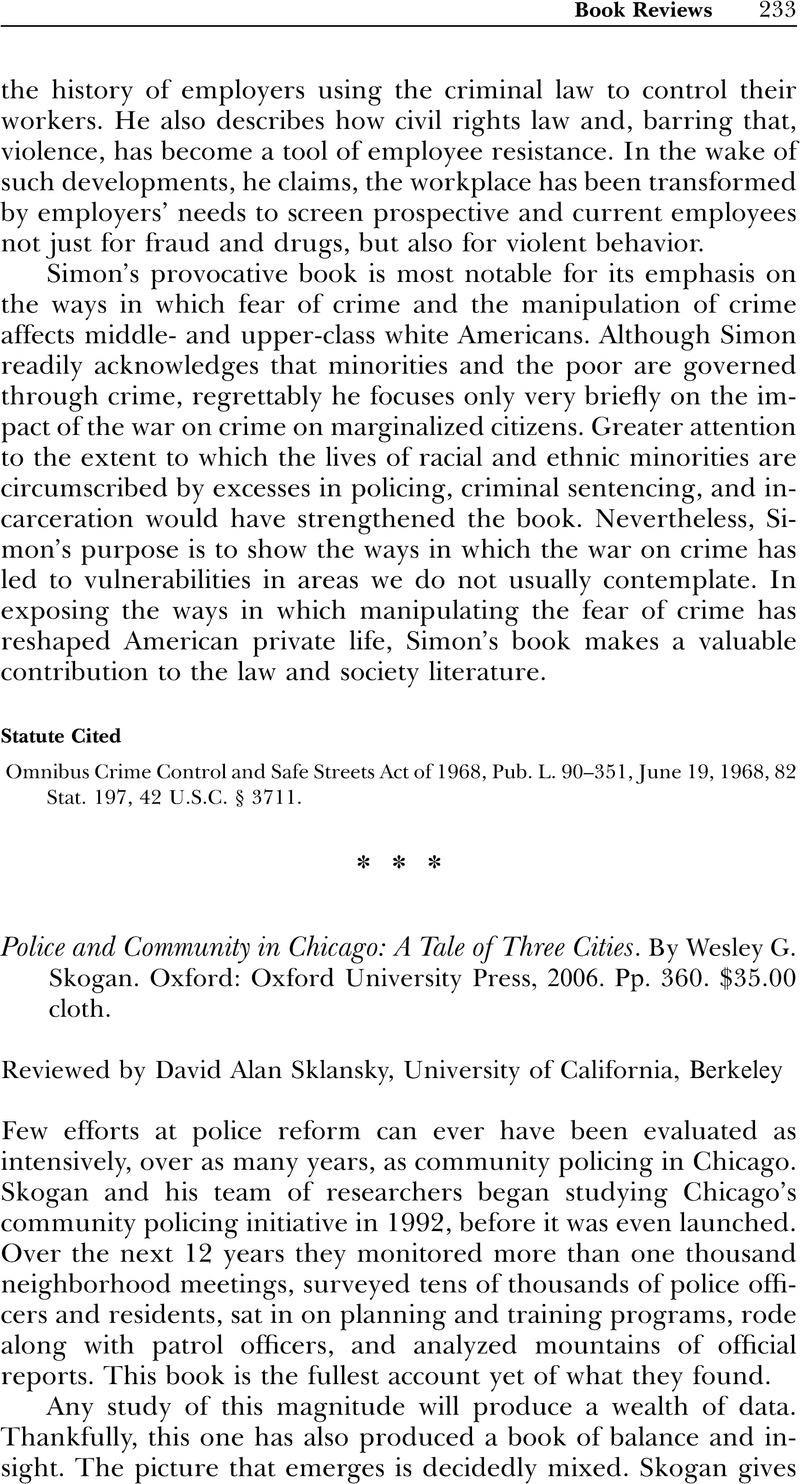No CrossRef data available.
Article contents
Police and Community in Chicago: A Tale of Three Cities. By Wesley G. Skogan. Oxford: Oxford University Press, 2006. Pp. 360. $35.00 cloth.
Review products
Published online by Cambridge University Press: 01 January 2024
Abstract

- Type
- Book Reviews
- Information
- Copyright
- © 2008 Law and Society Association.


